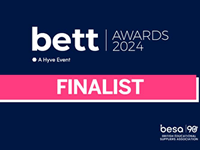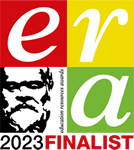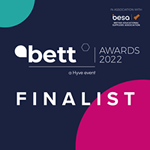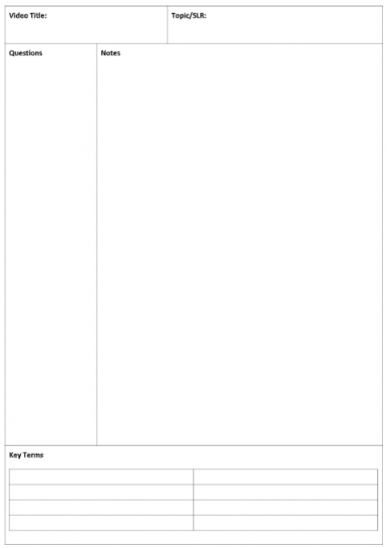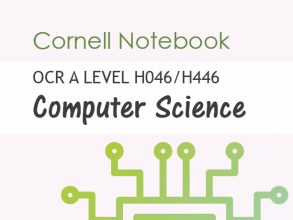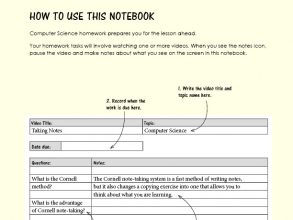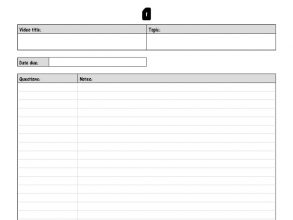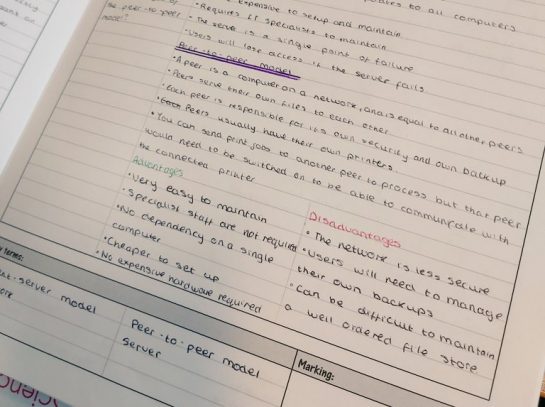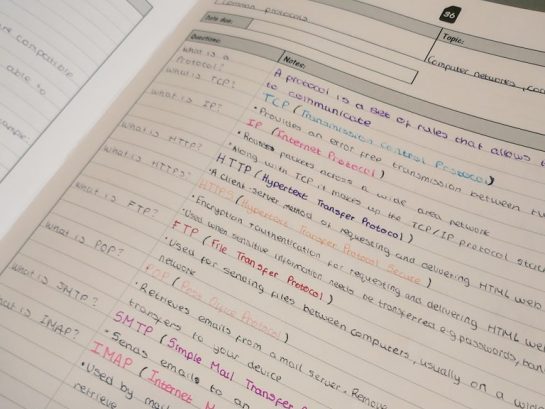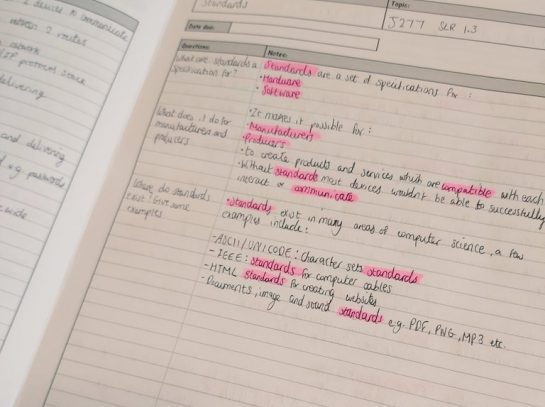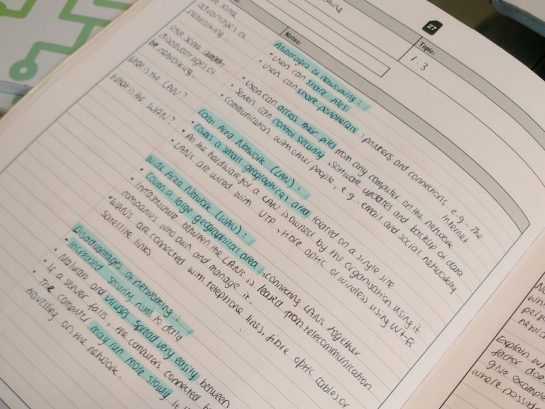Cornell note-taking
How Cornell note-taking works with secondary school students
We recommend students at both GCSE and A level use the Cornell method of note taking when watching our videos. They can do this either in a regular exercise book, using our Word template or our Cornell notebooks. Our custom Cornell notebooks are pre-formatted for students, but if they use a regular exercise book instead, they should use a ruler to divide the page as shown below.
The title of the video and the topic it relates to are written in the top section. In the main “Notes” section, students write notes from the video. If this is a GCSE video, they can pause the video when they see the notes icon and copy down what is on the screen into their notes. This provides scaffolding so that students begin to learn how to take notes, and understand what is important to note down and what isn’t.
We shouldn't assume students will know how to take notes without ever being formally taught how. They tend to copy everything or write very little. This scaffolded approach prepares them for A level and beyond where this scaffolding is removed.
Having recorded the notes, students should then review them. This is where the challenge in the homework begins that Ofsted look for in outstanding practice. Students should read their notes and turn each part into a question in the section on the left. For example, the notes may say, “The value of the program counter is passed to the memory address register”. The question then becomes, “which register is the value of the program counter passed to?” Sometimes these questions are easy, and at times they are more difficult to write. There may also be more than one valid question, and students will need to decide for themselves which are the most appropriate questions for revision given the limited space.
Encourage students to group knowledge so that a question relates to a small set of notes rather than a question for each line! For example, a suitable question may be, “what are the differences between RISC and CISC architectures?”
Finally students should identify a maximum of eight significant key words from the notes and list them in the bottom section.
If your students are following the flipped classroom approach, they create these notes AHEAD of the lesson so that they can use them in the lesson to complete classwork. By taking this approach the teacher does not need to teach in the traditional sense from the front of the classroom. Students become more independent learners. They have listened to the knowledge in the video, passed it through their brains to their hands to record it. In lessons they read the knowledge from their book, pass it through their brains to their hands to complete the activities. This double knowledge recall approach is far more effective than teaching it once from the front of the class.
We suggest that students start a new page in their books for every video. This makes it easy to check if they have done the homework, easy to mark, and quick to evaluate the depth. It will mean there is some white/empty space in their books, but it is better to have orderly, neat notes.
The advantages of a Cornell approach to note taking include:
- Students will have an organised set of notes.
- The quality of the notes will be much better and suitable for revision.
- The information is in a format that suits both short and long-term memory.
- A simple homework of recording information which is already effective becomes more challenging which is what Ofsted want!
- Preparing students for note taking at university. (The Cornell method is named after Cornell University)
Our cost-price Cornell notebooks available to buy
We sell Cornell notebooks at cost-price to schools, so sorry, there are no discounts or proof copies available. Any exercise book will do, these ones are just a little more special.
Examples from our students
Registered in England and Wales: 10442992
VAT Number: 290 9845 58
Telephone: 01452 947500
Email: admin@craigndave.co.uk
